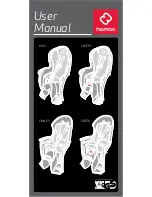
8.2.2
Status indicators
3 LEDs are arranged on the control panel. The two outer LEDs light up yellow and the
center LED in green.
The table below describes the individual function displays. The actual behavior of the
LEDs during operation represents a combination of these function displays.
Table 9: Function of the LEDs
Sensor
condi‐
tion
LED 1 (Q1)
LED 2 (PWR)
LED 3 (Q2)
Display Meaning
Display Meaning
Display Meaning
SIO
1
O
Lights
up
Q1 high
O
Lights
up
Power ok
O
Lights
up
Q2 high
o
Does
not light
up
Q1 low
o
Does
not light
up
Q2 low
IO-Link
2
O
Lights
up
Q1 high
F
Flash‐
ing
IO-Link active
O
Lights
up
Q2 high
o
Does
not light
up
Q1 low
o
Does
not light
up
Q2 low
Error
No error display via LEDs
Teach
This table only lists the LED behavior during operation.
The LED behavior during teach-in can be found in
1
If LED 1 (Q1), LED 2 (PWR) and LED 3 (Q3) light up at the same time, Q3 is active.
2
•
During position measurement via IO-Link, only LED 2 (PWR) flashes
•
Up to 16 switching points can be taught in via IO-Link. Only the first 3 switching points are shown
via LEDs as in SIO mode.
8.3
Teach-in mode
Table 10: Teach behavior
Teach-in mode
Dynamic Teach
Automated switching point teach-in
Manual Teach
Manual switching
point teach-in
Number of switching
points
2 switching points
When 2 x speed v
1
= 0
is detected during
teach-in.
3 switching points
When 3 x speed v
1
= 0
is detected during
teach-in.
3 switching points
Between 1 and 3
switching point (Qints)
can be manually
taught in indepen‐
dently of each other.
OPERATION
8
8025942/2020-07-16 | SICK
O P E R A T I N G I N S T R U C T I O N S | MPS-G with 2 / 3 switching points and IO-Link (up to 16 switching points)
27
Subject to change without notice
















































